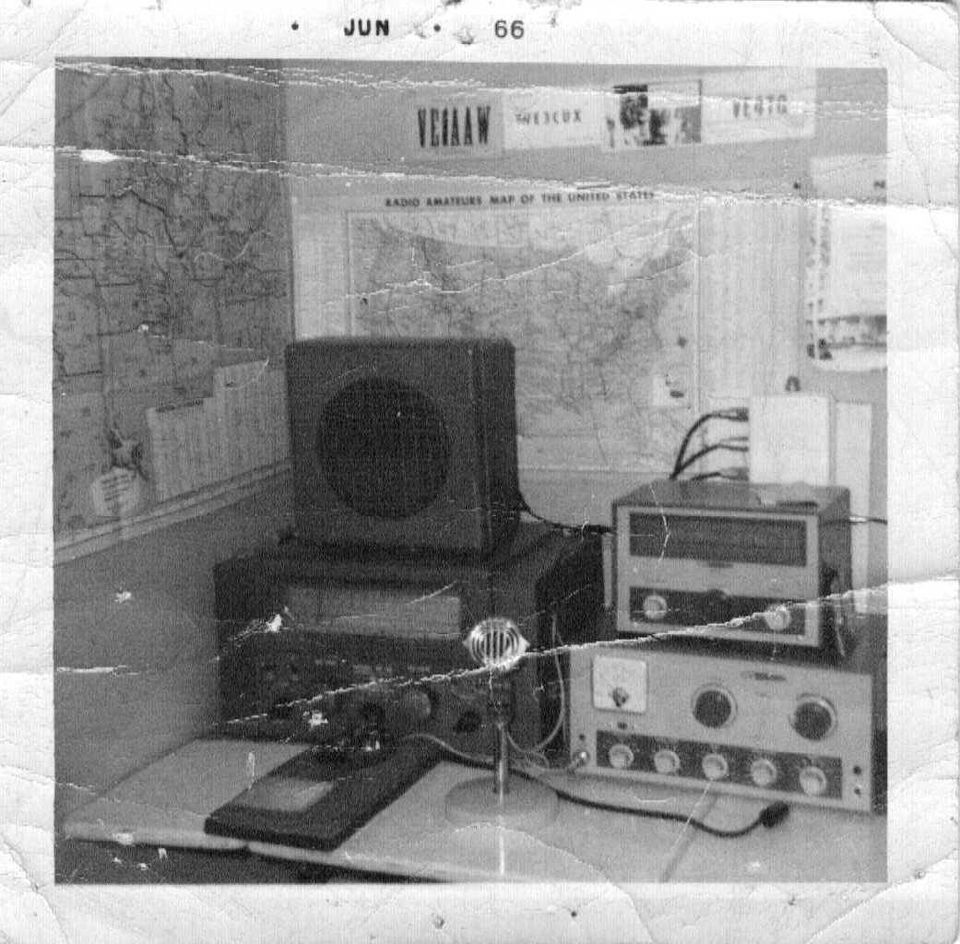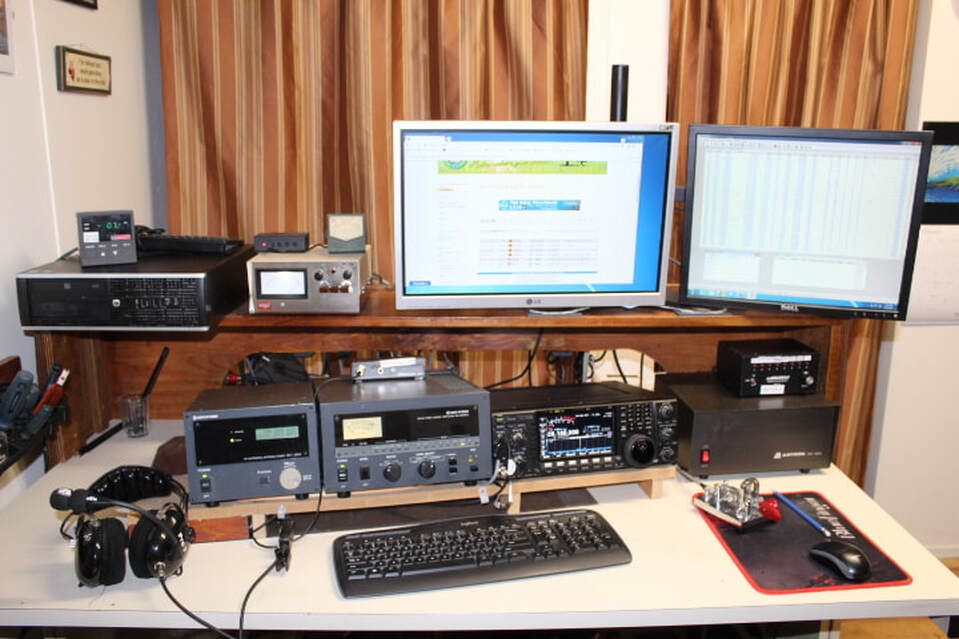How I became involved in Amateur Radio
VE9MY, Len Morgan
Near Saint John, New Brunswick.
Since 1964, I have held callsigns in a number of Provinces.
I became involved in amateur radio through the influence of a high school friend of mine who's father was an amateur. He did much experimenting with radio and it peeked my interest to get involved. The local ham club was putting on a course and I enrolled. Within a few weeks I went to the local DOC office to write my exam and I passed.
The weekend my friend and I were going for a weekend at a local park and his father gave me a CW transmitter constructed within a small plastic box to try to check in to the evening net. Along with my National receiver, that was my first short QSO.
In the early years we used old surplus VHF gear to get on 2 meters and my first HF station consisted of a National Receiver that I had obtained with a Heathkit DX-60 transmitter and remote VFO I had constructed from kits. Antenna's were dipoles.
Within a couple of years I moved to Wabush, Labrador for work and amateur radio became very different. There were only 2-3 hams in the area and soon we organized a club and started having events. Being in Zone 2 was awesome for amateur radio as there were very few ham's in Zone 2 and amateurs around the world were hungry for that zone for worked all zones. Frequently I would get requests to make a schedule to work some nice DX around the world. Weekly we would provide Phone Patch connections for some of our work friends to hook them up with another ham who would connect them to family for a short chat. Very popular at the time. The DX bug had hit me and soon I became very involved with chasing DX and contesting.
I have never been much of “Net ham” or one who spent hours rag-chewing. It wasn't my “cup of tea”, but each to his own.
Over the years I have been involved in Islands on the Air, and recently Parks on the Air, all fun type activities. One of the my key adventures in ham radio was a “dxpedition” to St. Paul Island for 7 days in the late 1990's with a bunch of ham friends. It is just a few kilometers off the north tip of Cape Breton Island but no different than being at some other exotic place and an exciting week for sure, with lots of BIG pile-up's to work us.
Today we have a fairly nice ham radio set-up with modern equipment, enough room for some decent antenna's for all bands and still enjoy chasing DX, just 6 more DXCC entities to have worked them all. This is a challenge as several of these have very restrictive access and may never be active.
Attached are pictures of my first ham radio set-up and one of today's set-up.
VE9MY, Len Morgan
Near Saint John, New Brunswick.
Since 1964, I have held callsigns in a number of Provinces.
I became involved in amateur radio through the influence of a high school friend of mine who's father was an amateur. He did much experimenting with radio and it peeked my interest to get involved. The local ham club was putting on a course and I enrolled. Within a few weeks I went to the local DOC office to write my exam and I passed.
The weekend my friend and I were going for a weekend at a local park and his father gave me a CW transmitter constructed within a small plastic box to try to check in to the evening net. Along with my National receiver, that was my first short QSO.
In the early years we used old surplus VHF gear to get on 2 meters and my first HF station consisted of a National Receiver that I had obtained with a Heathkit DX-60 transmitter and remote VFO I had constructed from kits. Antenna's were dipoles.
Within a couple of years I moved to Wabush, Labrador for work and amateur radio became very different. There were only 2-3 hams in the area and soon we organized a club and started having events. Being in Zone 2 was awesome for amateur radio as there were very few ham's in Zone 2 and amateurs around the world were hungry for that zone for worked all zones. Frequently I would get requests to make a schedule to work some nice DX around the world. Weekly we would provide Phone Patch connections for some of our work friends to hook them up with another ham who would connect them to family for a short chat. Very popular at the time. The DX bug had hit me and soon I became very involved with chasing DX and contesting.
I have never been much of “Net ham” or one who spent hours rag-chewing. It wasn't my “cup of tea”, but each to his own.
Over the years I have been involved in Islands on the Air, and recently Parks on the Air, all fun type activities. One of the my key adventures in ham radio was a “dxpedition” to St. Paul Island for 7 days in the late 1990's with a bunch of ham friends. It is just a few kilometers off the north tip of Cape Breton Island but no different than being at some other exotic place and an exciting week for sure, with lots of BIG pile-up's to work us.
Today we have a fairly nice ham radio set-up with modern equipment, enough room for some decent antenna's for all bands and still enjoy chasing DX, just 6 more DXCC entities to have worked them all. This is a challenge as several of these have very restrictive access and may never be active.
Attached are pictures of my first ham radio set-up and one of today's set-up.

